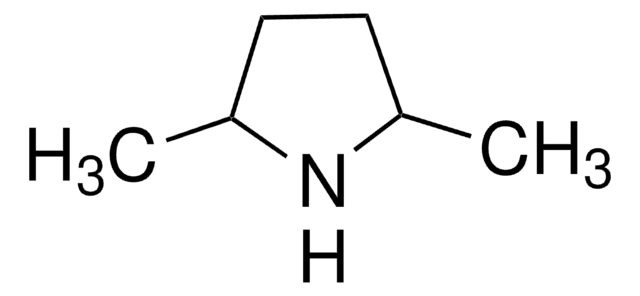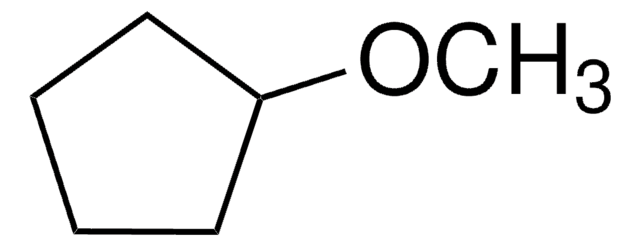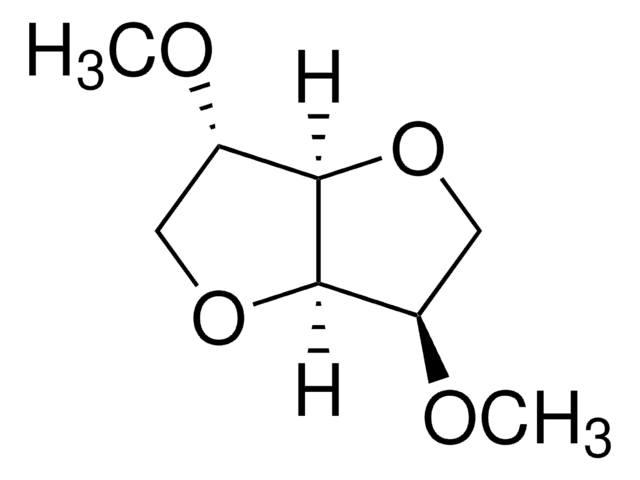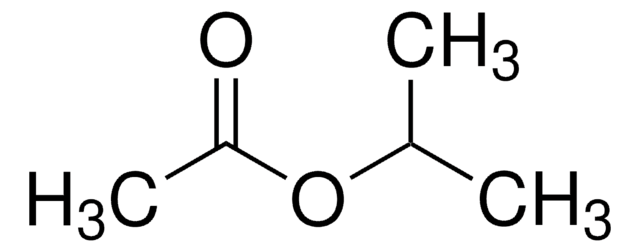155810
2-Methyltetrahydrofuran
BioRenewable, ReagentPlus®, ≥99.5%, contains 150-400 ppm BHT as stabilizer
Synonym(s):
2-MeTHF, Tetrahydro-2-methylfuran, Tetrahydrosilvan
About This Item
Recommended Products
Quality Level
product line
ReagentPlus®
Assay
≥99.5%
form
liquid
contains
150-400 ppm BHT as stabilizer
expl. lim.
0.34-6.3 %
greener alternative product characteristics
Safer Solvents and Auxiliaries
Use of Renewable Feedstocks
Learn more about the Principles of Green Chemistry.
impurities
≤1.0% water (coulometr.)
≤100 ppm peroxide (as H2O2)
refractive index
n20/D 1.406 (lit.)
bp
78-80 °C (lit.)
mp
-136 °C
density
0.86 g/mL at 25 °C (lit.)
SMILES string
CC1CCCO1
InChI
1S/C5H10O/c1-5-3-2-4-6-5/h5H,2-4H2,1H3
InChI key
JWUJQDFVADABEY-UHFFFAOYSA-N
Looking for similar products? Visit Product Comparison Guide
Related Categories
General description
2-Methyltetrahydrofuran (2-MTHF), a 2-methyl substituted tetrahydrofuran, is a biomass derived, environmentally favorable solvent alternative to tetrahydrofuran (THF), 1,4 Dioxane (Dioxane) and dichloromethane (DCM) for most industrial applications. Its polarity and Lewis base strength is intermediate between tetrahydrofuran (THF) and diethyl ether. It is a potential greener solvent alternative for organic synthesis and shows resistance to reduction by lithium making it a promising candidate as electrolytes in lithium batteries.
Application
THF in organometallic reactions
- Grignard
- Reformantsky
- Lithiation
- Hydride Reduction
- Metal-Catalyzed Coupling (Heck, Stile, Suzuki)
Dichloromethane for Biphasic Reactions:
- Alkylation
- Amidation
- Nucleophilic Substitution
Features and Benefits
- Made from Renewable Resource - furfural derived from agricultural byproducts
- High boiling point
- Clean organic-water phase separation
- Reduced energy to recover
Legal Information
related product
Signal Word
Danger
Hazard Statements
Precautionary Statements
Hazard Classifications
Acute Tox. 4 Oral - Eye Dam. 1 - Flam. Liq. 2 - Skin Irrit. 2
Supplementary Hazards
Storage Class Code
3 - Flammable liquids
WGK
WGK 2
Flash Point(F)
14.0 °F - closed cup
Flash Point(C)
-10.0 °C - closed cup
Certificates of Analysis (COA)
Search for Certificates of Analysis (COA) by entering the products Lot/Batch Number. Lot and Batch Numbers can be found on a product’s label following the words ‘Lot’ or ‘Batch’.
Already Own This Product?
Find documentation for the products that you have recently purchased in the Document Library.
Customers Also Viewed
Related Content
Why should you have to choose between solvents that are ecological and those that are reliable? Enjoy both at once with our biorenewable and greener solutions. Cyrene™ solvent is a new dipolar aprotic alternative to common REACH restricted solvents, such as N methyl-2-pyrrolidone (NMP) and Dimethylformamide (DMF).
Our team of scientists has experience in all areas of research including Life Science, Material Science, Chemical Synthesis, Chromatography, Analytical and many others.
Contact Technical Service










